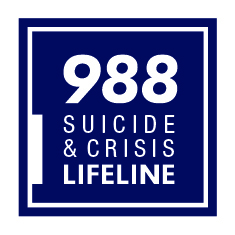You can help:
It is a myth that asking someone about suicide actually creates suicidal thoughts. Talking to individuals about suicide does not increase their risk. Ask the question – Are you thinking of suicide? or Are you considering harming or killing yourself? or Have things gotten so bad that you don’t care if you live or die?
Warning signs of suicide risk:
- Talking or writing about death, dying or suicide.
- Talking of feeling hopeless or having no reason to live.
- Talking about feeling trapped or being in unbearable pain.
- Talking about being a burden to others.
- Threatening to hurt or kill oneself.
- Seeking pills, weapons or other means to kill oneself.
- Giving away personal or prized possessions.
- Displaying extreme mood swings.
- Taking risks/engaging in reckless behaviors.
- Increasing use of alcohol and/or drugs.
- Withdrawing from friends and family.
- Having made previous suicide attempt(s).
The risk for suicide may be greater:
- Following a tragic event or loss.
- If the individual increases use of alcohol or drugs.
- If the individual behaves in a reckless or agitated manner.
- If the individual identifies as lesbian, gay, bisexual, transgender, or questioning.
- If the individual is a military veteran.
- If the individual has experienced the loss of someone to suicide.
The DOs:
- DO trust your intuition.
- DO call 911 if you are concerned for an individual’s immediate safety or if an individual needs immediate attention.
- DO stay calm.
- DO take your time and be patient when responding to someone at risk.
- DO listen carefully to better understand the individual’s concerns.
- DO take concerns seriously.
- DO offer hope, reasons to be hopeful, alternatives to the situation, resource information and information on how helpful treatment can be.
- DO urge the individual to accept professional support. Consider making a phone call to a mental health resource to connect the individual to appropriate services. Review your campus card for resources specific to your location.
The DON’Ts:
- DON’T ignore the warning signs.
- DON’T leave someone alone if there is a risk of self-harm.
- DON’T minimize the situation.
- DON’T make the problem your own.
- DON’T argue or try to change the individual’s emotions.





